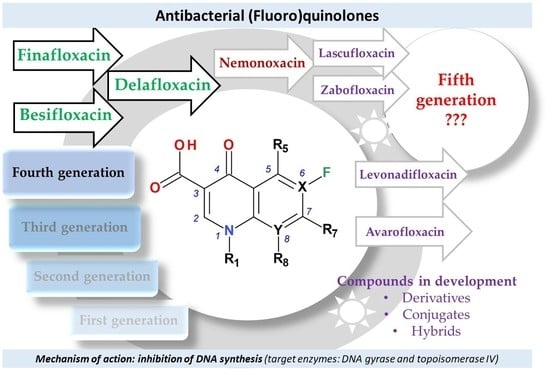Structural Characterization of the Millennial Antibacterial (Fluoro)Quinolones—Shaping the Fifth Generation
Abstract
Share and Cite
Rusu, A.; Lungu, I.-A.; Moldovan, O.-L.; Tanase, C.; Hancu, G. Structural Characterization of the Millennial Antibacterial (Fluoro)Quinolones—Shaping the Fifth Generation. Pharmaceutics 2021, 13, 1289. https://doi.org/10.3390/pharmaceutics13081289
Rusu A, Lungu I-A, Moldovan O-L, Tanase C, Hancu G. Structural Characterization of the Millennial Antibacterial (Fluoro)Quinolones—Shaping the Fifth Generation. Pharmaceutics. 2021; 13(8):1289. https://doi.org/10.3390/pharmaceutics13081289
Chicago/Turabian StyleRusu, Aura, Ioana-Andreea Lungu, Octavia-Laura Moldovan, Corneliu Tanase, and Gabriel Hancu. 2021. "Structural Characterization of the Millennial Antibacterial (Fluoro)Quinolones—Shaping the Fifth Generation" Pharmaceutics 13, no. 8: 1289. https://doi.org/10.3390/pharmaceutics13081289
APA StyleRusu, A., Lungu, I.-A., Moldovan, O.-L., Tanase, C., & Hancu, G. (2021). Structural Characterization of the Millennial Antibacterial (Fluoro)Quinolones—Shaping the Fifth Generation. Pharmaceutics, 13(8), 1289. https://doi.org/10.3390/pharmaceutics13081289









